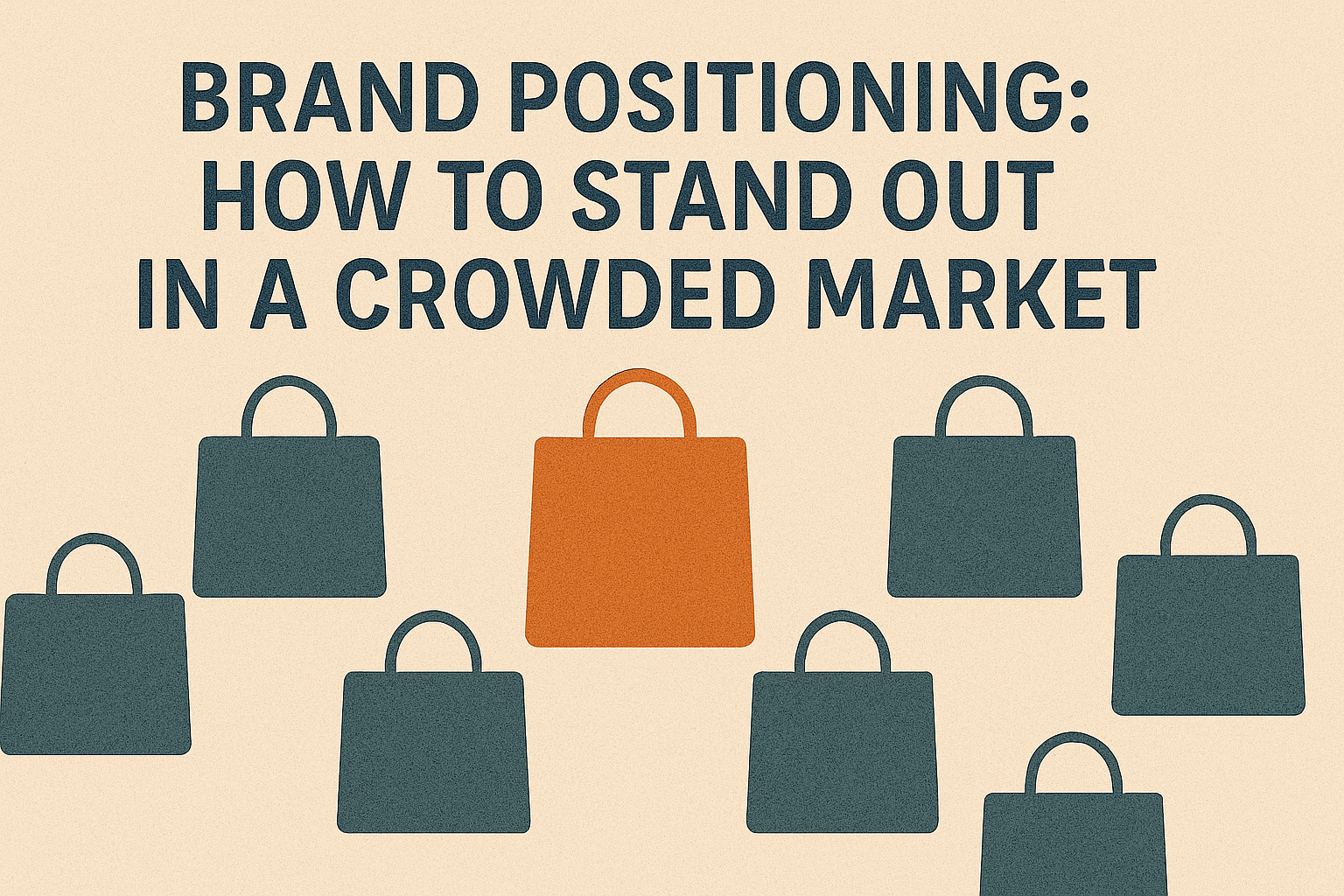
Introduction: Why Brand Positioning Matters More Than Ever
In today’s hypercompetitive digital landscape, having a great product or service is no longer enough. If you want your business to thrive, you need to define how you’re different—and more importantly, why that difference matters to your target audience.
That’s the role of brand positioning—the strategy that places your brand in the mind of your ideal customer and helps you cut through the clutter with clarity and confidence.
Whether you’re launching a startup or reinventing an established brand, this article will walk you through the principles of strong brand positioning and how to build a position that commands attention, trust, and loyalty.
What Is Brand Positioning?
Brand positioning is the space a brand occupies in the minds of consumers and how it is distinguished from competitors. It’s not just what you say about yourself—it’s what people believe about you based on every experience with your business.
Think of it as answering three core questions:
- Who are you?
- Who are you for?
- Why should anyone care?
Elements of Effective Brand Positioning
To position your brand effectively, you need to nail down these five elements:
1. Target Audience
Understand who your ideal customer is—what they want, fear, value, and struggle with. Your positioning should speak directly to them.
2. Market Category
Identify the category you compete in. Are you a budget SaaS tool or a premium agency? Defining your arena helps clarify the rules of engagement.
3. Customer Problem
What problem does your brand solve? The more urgent and emotional the problem, the more powerful your positioning can be.
4. Unique Value Proposition (UVP)
This is the core of your positioning. What makes your solution uniquely better? Be specific and outcome-focused.
5. Brand Personality
Your tone, style, and values help you build emotional connections. A playful tone might resonate with Gen Z; a professional one with enterprise buyers.
Positioning Examples: The Brands That Do It Best
- Nike: “Inspiration and innovation for every athlete.” Positioned as aspirational, inclusive, and performance-driven.
- Apple: “Think different.” Apple isn’t just a tech company; it’s a creative enabler and lifestyle icon.
- Slack: “Where work happens.” More than a chat tool—it’s a digital HQ for remote teams.
Each of these companies owns a distinct emotional and functional space in the minds of their audience.
How to Craft Your Brand Positioning Statement
A positioning statement isn’t a tagline—it’s your internal compass. Here’s a quick template:
For [target customer], who want [statement of need], our brand provides [key benefit] unlike [competitor alternative], because [reason to believe].
Example:
For small ecommerce businesses looking to boost sales, our agency offers data-driven email marketing campaigns unlike generic software tools, because we combine AI-powered automation with personal human support.
Tips for Standing Out in a Crowded Market
- Be hyper-specific: The narrower your focus, the deeper your impact.
- Own a word: Think “safe” for Volvo or “fast” for FedEx.
- Leverage storytelling: Stories stick. Frame your brand around a transformation.
- Be bold: Safe is forgettable. Stand for something that matters.
- Align every touchpoint: From visuals to customer service, your positioning should echo everywhere.
FAQs About Brand Positioning
1. What’s the difference between brand positioning and branding?
Branding is your logo, visuals, and messaging. Positioning is the strategic foundation behind it all—where you fit in the market.
2. Can small businesses benefit from brand positioning?
Absolutely. In fact, the smaller the business, the more essential positioning becomes to avoid getting drowned out by bigger competitors.
3. How often should I update my positioning?
Review it at least annually or during major shifts like entering a new market, rebranding, or launching a new product line.
4. Should positioning focus more on competitors or customers?
Both, but prioritize customers. Knowing their pain points, values, and desires helps you outshine competitors naturally.
5. How do I test if my positioning is working?
Track brand recall, customer sentiment, conversions, and even A/B test different messaging approaches to see what resonates.
Final Thoughts
In a world saturated with messages, clarity is your competitive advantage. A strong brand position doesn’t just set you apart—it guides everything you do, from marketing to customer experience.
If you want to build a brand that not only survives but thrives in today’s crowded marketplace, it’s time to stop blending in and start owning your space.
Need help developing your brand positioning strategy? Let’s connect.



